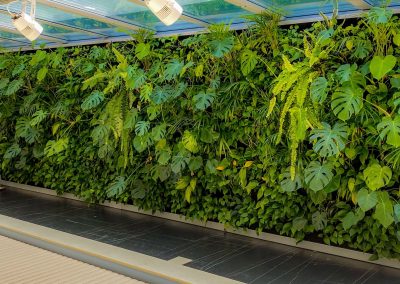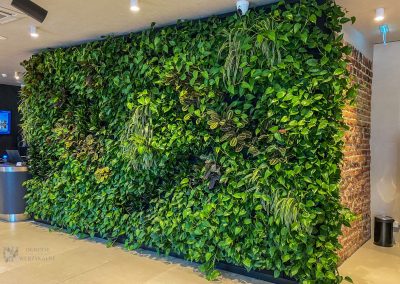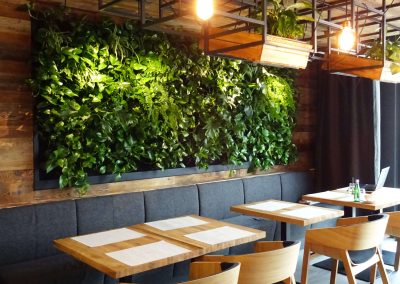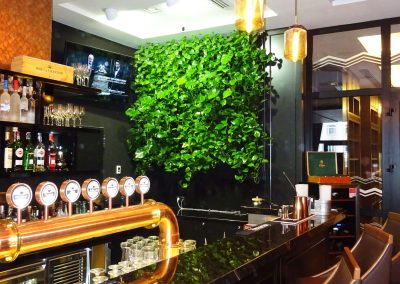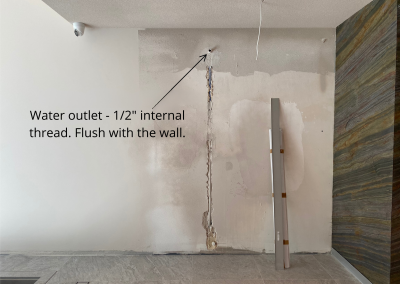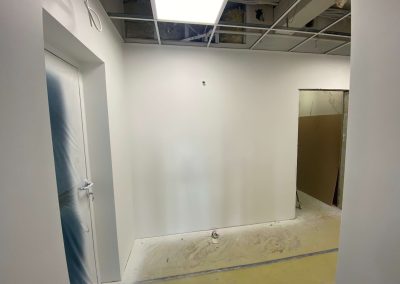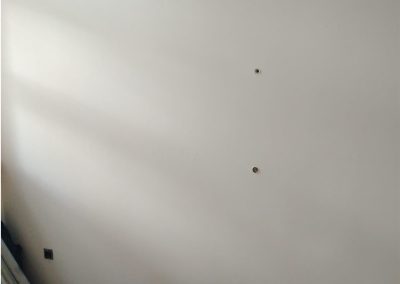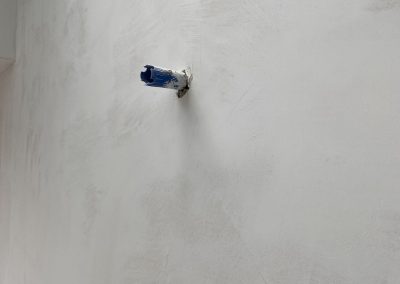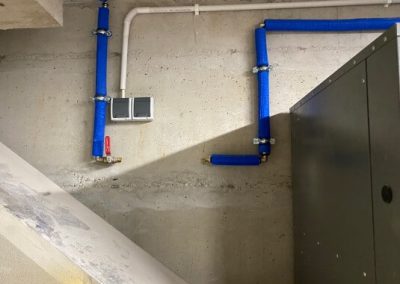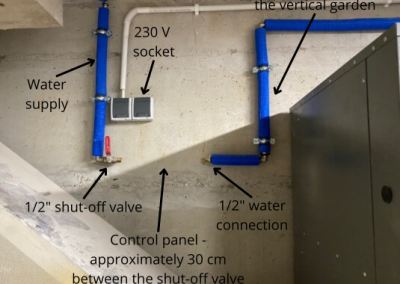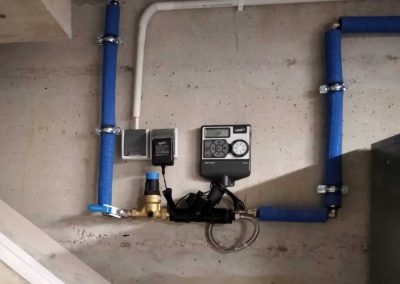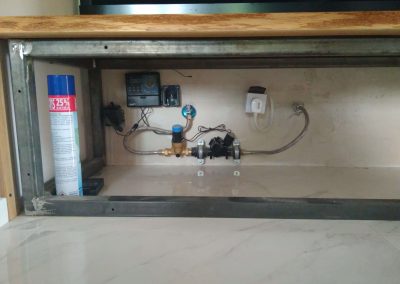Indoor vertical gardens
Indoor vertical gardens are connected to a building’s plumbing and watered directly from there, excess water is then released into the building’s drainage system. This is all automatically managed by the wall’s control system.
On each of our vertical gardens, watering starts from the top row of plants and then trickles down to the rest of the wall. Any excess water is then collected in a gutter installed at the bottom of the wall before being drained into the building’s internal drainage system.
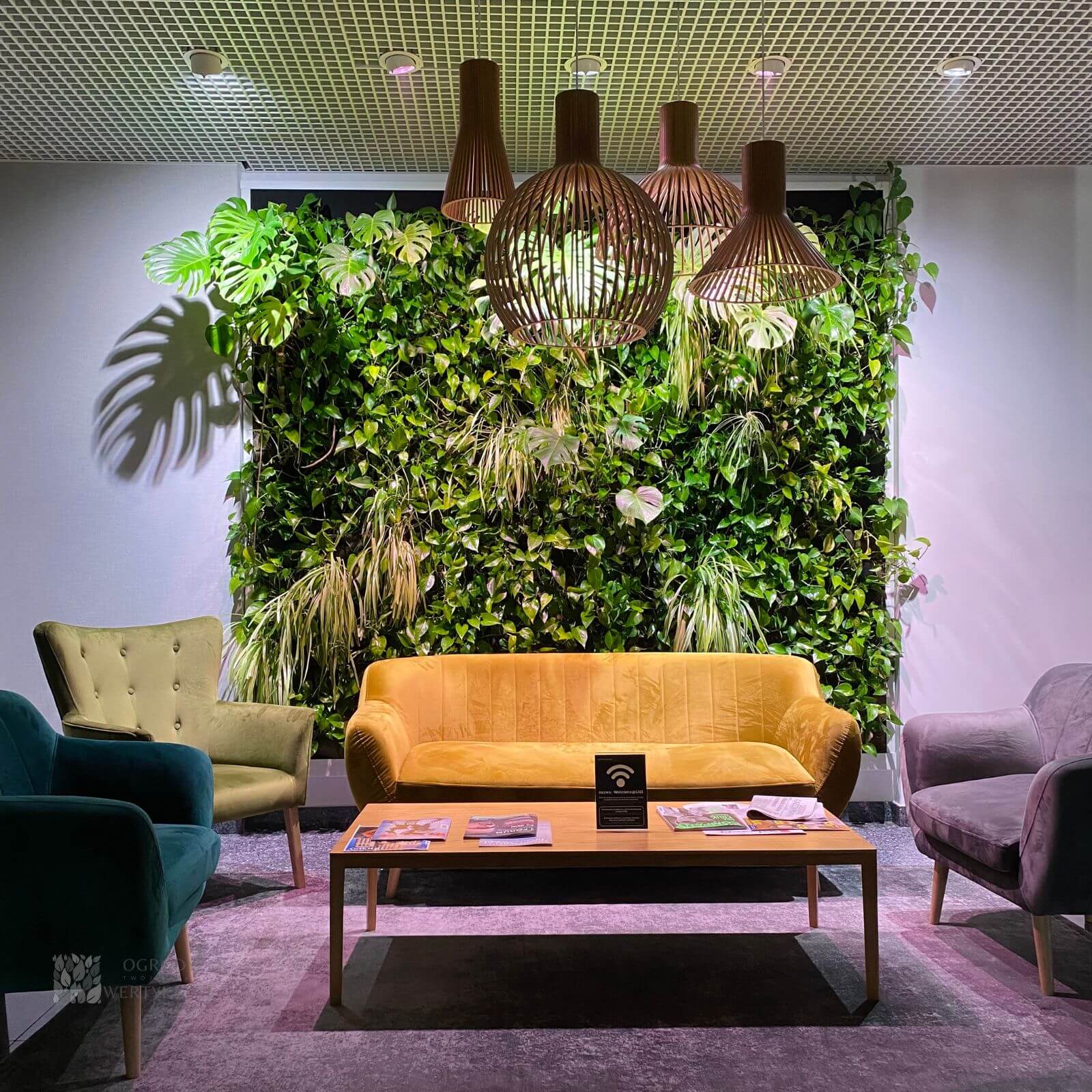
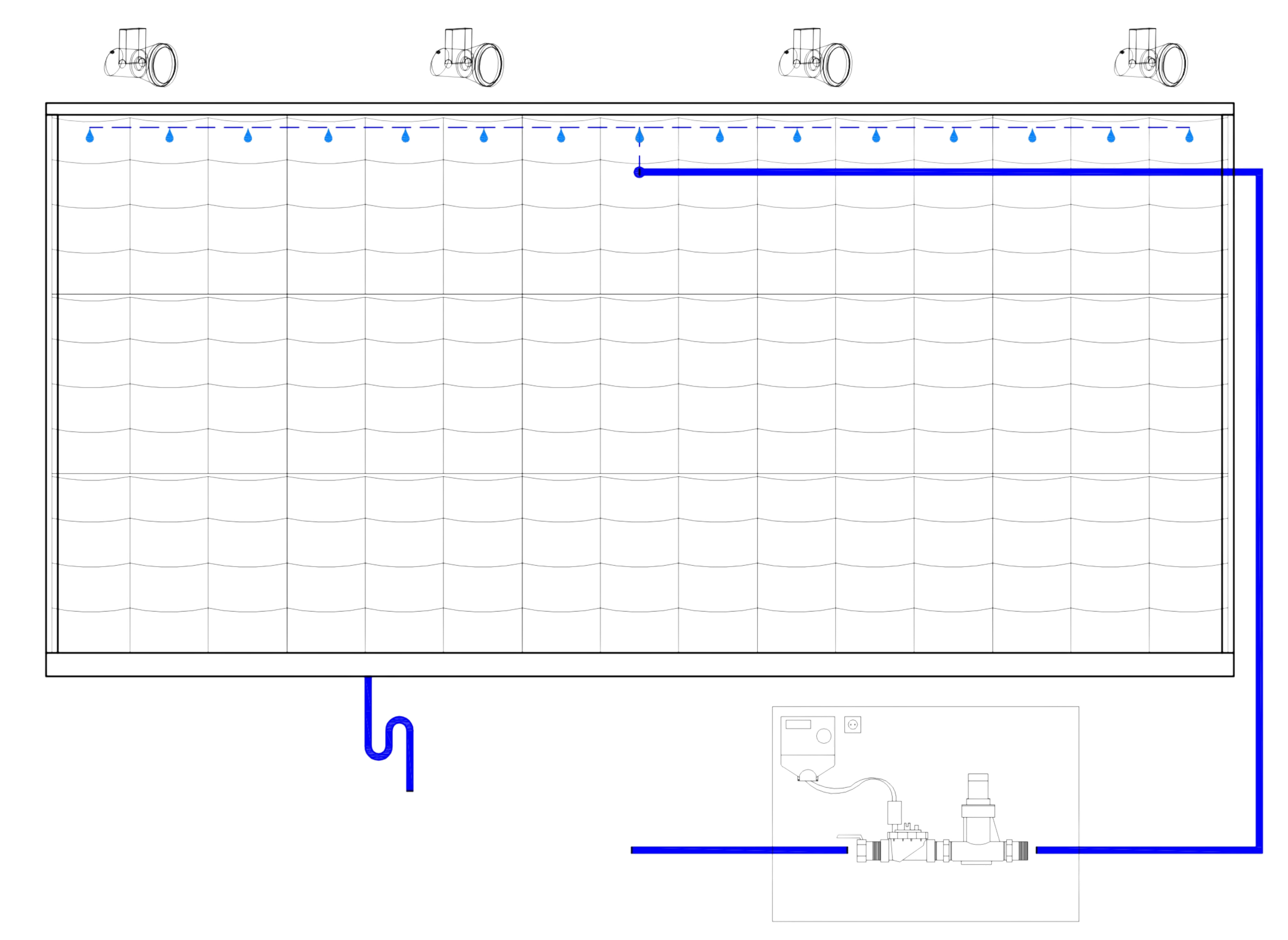
Vertical gardens which are directly connected to your building can be built directly from the floor or suspended above the floor (the bottom gutter is always the lowest part). More examples of indoor wall installations can be found in our gallery.
What do you need to create an indoor vertical garden?
- Water supply.
- Control panel (location and power source)
- Drainage connection (siphon).
- Lighting, suitable for plants.
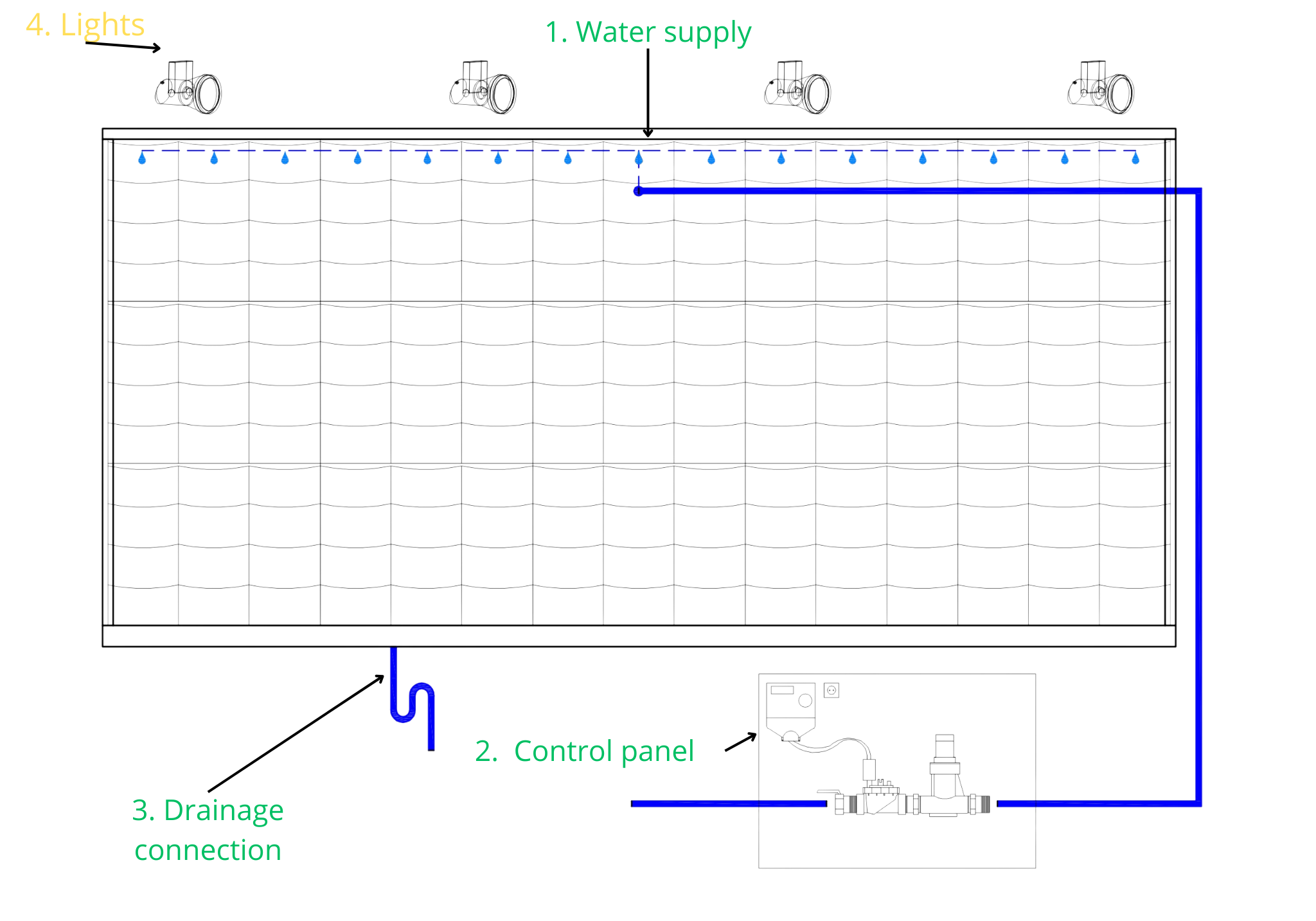
1. Water supply
2. Control Panel
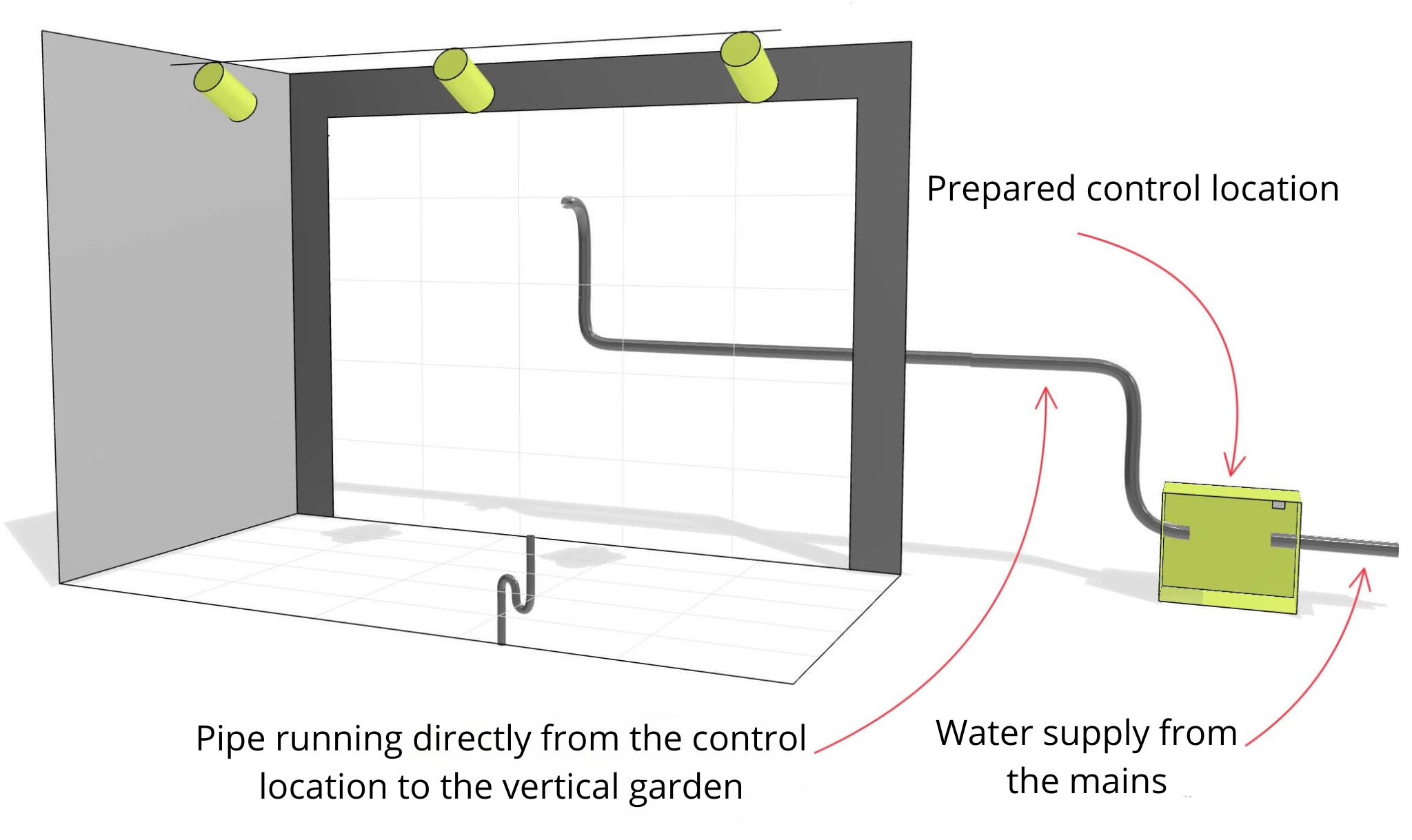
3. Drainage Connection
- From the floor level
- Above the floor level
- Covered
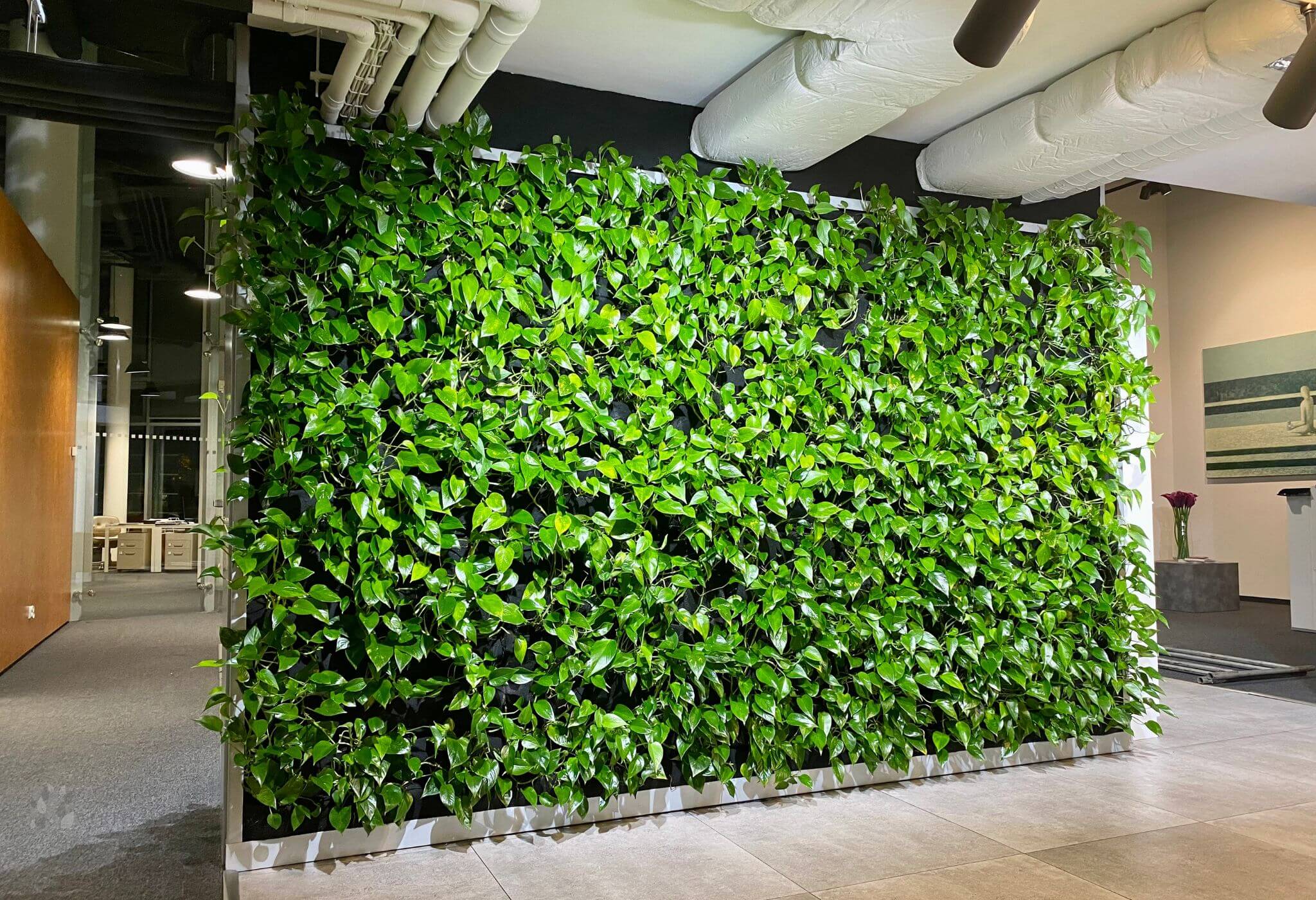
The picture shows an indoor vertical garden that starts at floor level. When installing this type of green wall, the drainage connection must be flush with the floor.
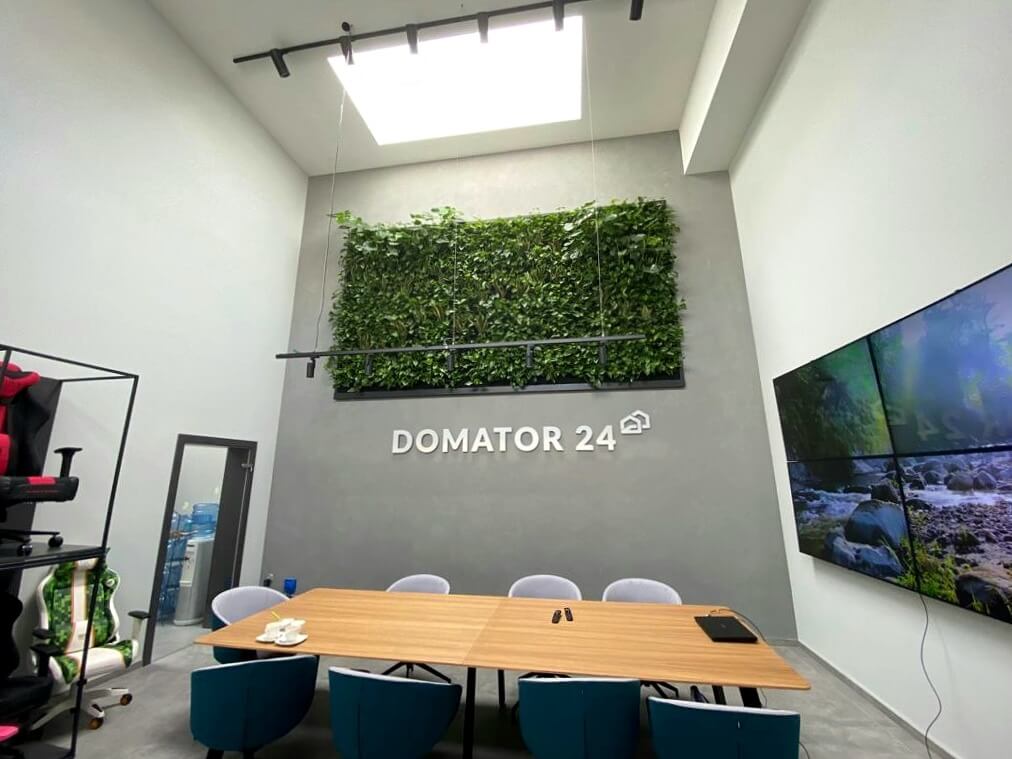
The photograph shows a green wall that has been constructed above floor level. When installing this type of vertical garden, the drainage connection is installed at the lowest part of the living wall. The garden also has a gutter to collect excess water. The gutter then connects to the building’s drainage.
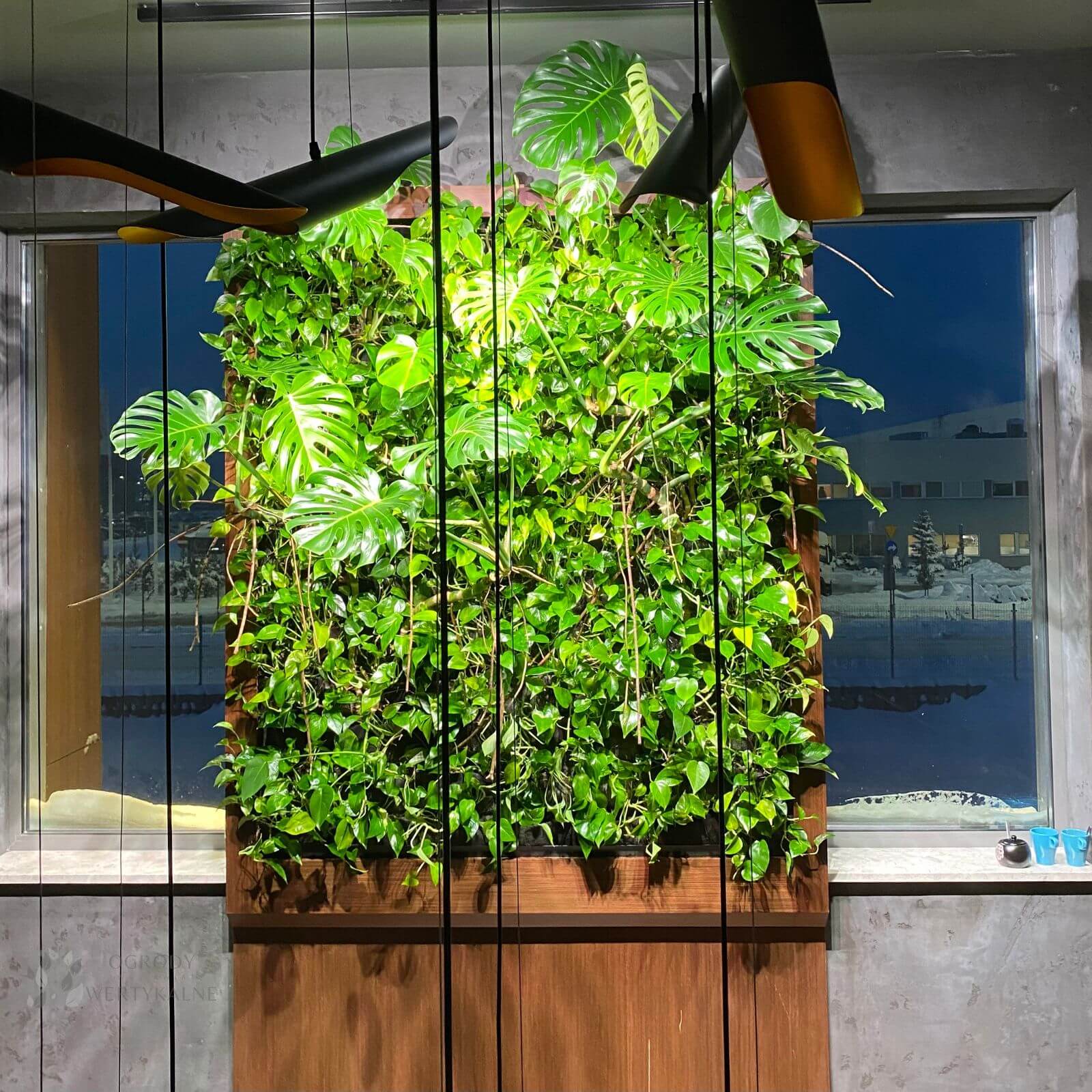
This indoor vertical garden is constructed above the floor level and features a front designed for concealing the wall’s drainage system. Building this type of indoor living wall allows for flexible installation of water drainage in the space between the floor and the lowest part of the living wall.
4. Lighting
The amount of light directed at the vertical garden should be no less than 800 lux per square metre of the green wall. LED lighting used for illuminating the plants should include the appropriate spectrum to support the plants’ photosynthesis process. It is recommended that lamps with a colour temperature of 4000 K to 6500 K and a CRI (Color Rendering Index) of no less than 90 should be used.
We advise that lighting is positioned about 120-170 centimetres away from the vertical garden.
Connecting the lighting to a timer switch ensures your plants always receive enough light, even when you are away.
The garden should be illuminated for 3 to 18 hours per day, depending on environmental conditions and the season. You can find more information about vertical garden lighting in the “Instructions – Lighting for Vertical Gardens” section.
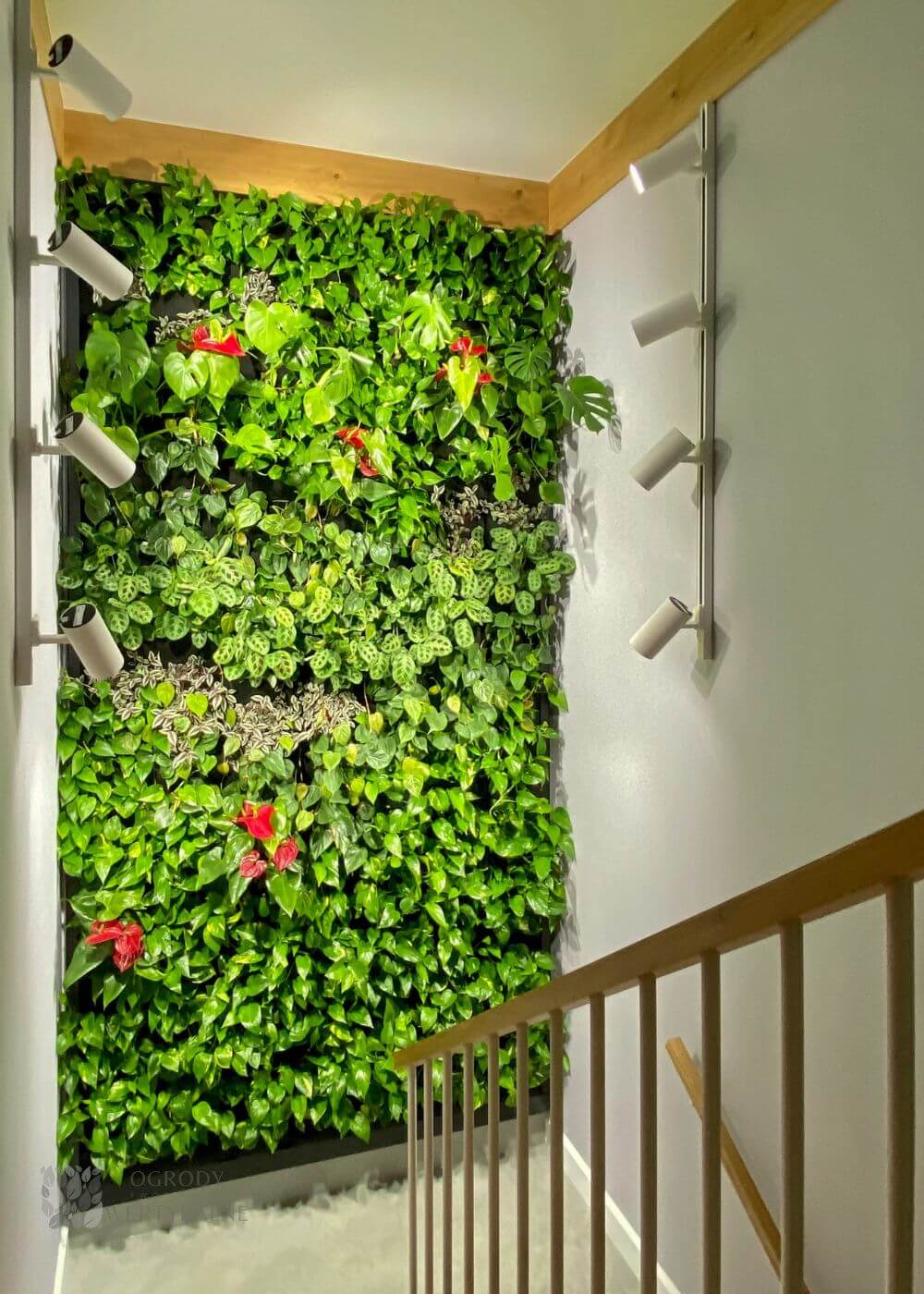
More of our indoor vertical gardens can be found in our vertical garden gallery. For more information, you can also visit our Pinterest or follow us on social media.
If you want to find out more about creating your own vertical garden, please fill out the contact form below and we will be in touch.

